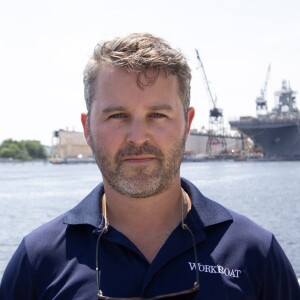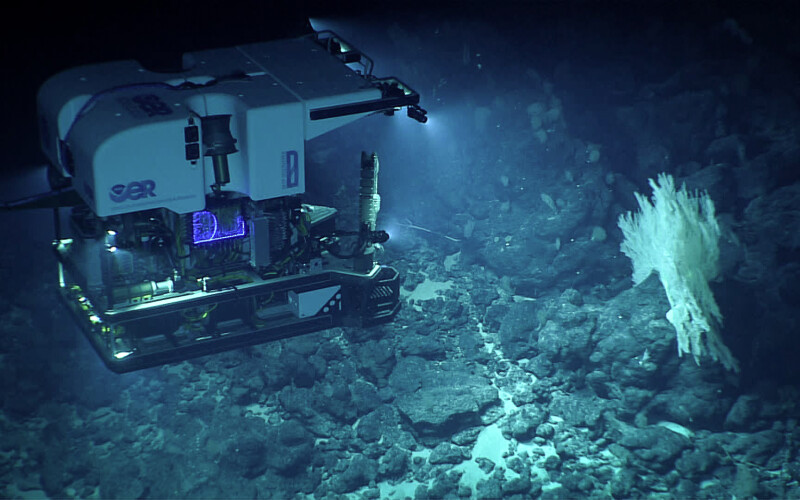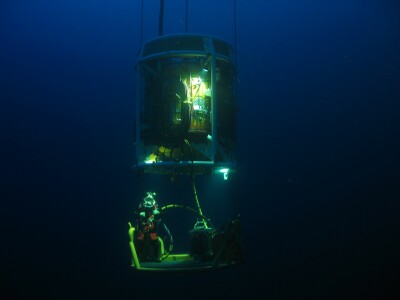In recent years, the offshore industry has witnessed remarkable advancements in subsea robotics, particularly around remotely operated vehicles (ROVs). These technological innovations have not only bolstered operational efficiencies but also revolutionized data collection methods and elevated safety standards. ROVs have become indispensable tools for meeting the demanding needs of offshore inspections and maintenance, especially in challenging underwater environments where precision, reliability, and adaptability are paramount.
Oceaneering International Inc. announced this year that its Aerospace and Defense Technologies (ADTech) business segment has been awarded a contract by the Defense Innovation Unit (DIU), a U.S. Department of Defense organization, for the development and testing of the Freedom Autonomous Underwater Vehicle (AUV) as a potential Large Displacement Unmanned Undersea Vehicle (LDUUV) prototype for the U.S. Navy’s Program Office for Advanced Undersea Systems.
With eight independent thrusters, Freedom supports mission success with its ability to conduct low altitude, precision operations in complex, critical subsea infrastructure environments, the company said. Oceaneering relied on its remotely operated vehicle (ROV) database, encompassing over six million hours of operation, to identify several technology building blocks (thrusters, connectors, batteries, etc.) that are key to the performance and reliability of the Freedom AUV system. The Freedom AUV uses the same maintenance and logistics systems used by Oceaneering’s fleet of work class ROVs, the largest in the world, which last year performed over 450,000 hours of subsea robotic services.
Oceaneering is also collaborating with researchers at the University of Houston (UH) and Chevron to create an autonomous robot to detect potential pipeline leaks and structural failures during subsea inspections, in response to an increasing number of severe accidents in the global oil and gas industry caused by damaged pipelines. The aim of this technology is to make the inspection process safer and more cost-effective, while also protecting subsea environments from potential disasters.
Traditional inspection methods relying on human divers are costly and time-consuming, especially for deep underwater targets. To address this, the University of Houston is developing SmartTouch technology, outfitting ROVs with smart touch sensors, cameras, and sonars. These ROVs can inspect subsea pipelines, focusing on critical areas like flange bolts identified by the Bureau of Safety and Environmental Enforcement (BSEE) as common sources of accidents and leaks. Last year, BSEE awarded UH a grant for just under $1 million for the project.
ROVs are also becoming heavily utilized in the military sector. Earlier this year, underwater technology company VideoRay, was awarded a $16.1 million contract from the Navy's Maritime Expeditionary Standoff Response (MESR) program. The contract is for mission specialist defender (MSD) underwater remotely operated vehicles (ROVs), mentioned above, and its associated components.
It brings the total value of the Navy's procurement of MSD vehicles and accessories to $49 million since their partnership with VideoRay through a production-other transaction agreement.
The Navy's objective is to continue equipping explosive ordnance disposal (EOD) units, with the MSD serving as the foundation for the MK20 Defender ROV program. The ROVs employ advanced technology to detect and neutralize underwater mines, particularly those found in maritime war zones, including areas near Ukraine.
VideoRay CEO Chris Gibson highlighted the advantages of the MSD, which offers modularity and an open systems architecture for seamless integration of third-party sensors and payloads. The product stands out for its performance in size, weight, and power (SWAP), along with a track record of reliability. Despite its compact and portable design, the MSD has excelled in various demanding missions in challenging underwater environments, Gibson said.
Through the MESR program, the Navy plans to enhance the baseline vehicle by gradually updating its sensors, autonomy features, tools, and manipulators. The improvements aim to provide EOD operators with enhanced capabilities, including increased standoff and reduced risk. The Navy has already successfully utilized the MSD in critical operations such as recovering a downed high-altitude balloon off the coast of South Carolina. Its portability, power, versatility, and reliability make it valuable for vital tasks like locating and neutralizing underwater mines.
Greensea Systems Inc. recently showcased untethered autonomous operation of commercially available ROVs in Richmond, VT. They utilized a VideoRay Defender ROV equipped with batteries, an acoustic modem, and their OPENSEA Edge system, demonstrating the ability to operate without a physical connection. The system empowers the ROV with significant processing power at the edge, handling navigation, communication, and task management.
This allows for data storage on the ROV itself, reducing the need for constant transmission to a topside computer. During sea operations, the ROV effectively conducted tasks like search, classification, mapping, and inspection for a simulated explosive ordnance disposal mission. Safe C2 technology enabled remote supervision of the ROV using a tablet. According to Greensea CEO Ben Kinnaman, eliminating the tether and onsite operator presents a new era for ocean work.
In April of this year, Nauticus Robotics tested its Aquanaut Mk2 underwater robot. The company states the subsea robot exceeded expectations during its initial tests in the Gulf of Mexico, including launch and recovery, emergency procedures, and maneuverability. Notably, the company’s 59' autonomous surface vessel (ASV) Hydronaut, is specifically designed to transport, deploy, communicate with, recharge, and recover Aquanaut, the company’s subsea robot.
Enabled by Nauticus’ autonomous machine intelligence software platform, toolKITT, the vessels maintain a cooperative pairing, thereby powering the capabilities of the fleet to complete complex subsea tasks. The autonomous through-hull deployment of transducers and acoustic communications systems will allow for the cooperative pairing of Hydronaut and Aquanaut.
“We believe this technology will impact the industry in three distinct ways: a greater than 90 percent reduction in greenhouse gas emissions over conventional methods; a greater than 50 percent reduction in operational cost; and an up to 90 percent reduction in personnel deployed offshore,” Nauticus CEO Nicolaus Radford told WorkBoat.
Personnel reduction in the form of safety protocols was also prevalent in a case study conducted by Interocean Marine Services. The company’s fleet of ROVs, ranging from micro to observation class, along with advanced aerial drones and collision-tolerant confined spaces drones, revealed the synergistic utilization of ROVs and UAVs for the DNV class internal and external structural assessment of spud cans on a barge vessel at a UK port.
Traditionally, such inspections posed significant risks to human divers and were limited in data quality and efficiency. By eliminating human involvement in hazardous environments, Interocean Marine Services' fleet significantly reduced project and safety risks while enhancing the well-being of inspection personnel.
Skilled ROV pilots can safely and effectively execute tasks ranging from traditional inspections to challenging deepwater repairs, thereby streamlining operations and reducing the overall time required for data acquisition, processing, and management.
Furthermore, the incorporation of AI-driven functions in ROVs, such as those developed by China-based QYSEA Technology, enhances the efficiency and safety of underwater inspections and operations. QYSEA has various compact ROVs tailored for non-destructive inspections. These AI functions empower operators to lock onto target objects underwater, enhance imaging clarity, enable precise measurements through augmented reality methods, and optimize images for realistic and high-quality visuals. Such advancements not only improve visual data for assessments but also enhance inspection efficiency and diver safety during maintenance operations.
Among QYSEA’s offerings, the FIFISH AI Underwater Robots represent a series of compact professional solutions designed for small-scale operations. Equipped with a self-developed vector thruster system, these ROVs provide operators with unparalleled underwater mobility, enabling precise maneuvers essential for marine inspections, operations, and explorations.
The range of ROVs offered by QYSEA, from small to medium-sized, can be easily managed by a single operator, enhancing efficiency in offshore field work. Furthermore, QYSEA's autonomous technology aims to mitigate human risks associated with traditional scuba diving in complex hydrological conditions around offshore platforms, thereby enhancing overall performance and safety standards through seamless operation and real-time feedback.
The evolution of remotely operated vehicles has brought about significant advancements in offshore operations, offering safety, efficiency, and data quality. As the offshore industry continues to evolve, the integration of advanced robotics like ROVs should play a crucial role in meeting its demanding needs and ensuring the integrity of subsea structures in challenging environments.





